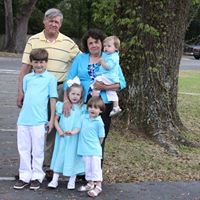Deborah L Tucker
age ~75
from North Port, FL
- Also known as:
-
- Deborah T Boyce
- Deborah L Parizo
- Deborah Lou Fuller
- Debora H Tucker
- Deborah L Perizo
- Deb L Parizo
- Deborah Ltucker
Deborah Tucker Phones & Addresses
- North Port, FL
- Milton, VT
- Underhill, VT
- Essex Junction, VT
- 274 Red Oak Dr, Colchester, VT 05446 • 8028638644
- Shelburne, VT
- Williston, VT
Lawyers & Attorneys

Deborah Tucker - Lawyer
view sourceOffice:
Honigman Miller Schwartz and Cohn LLP
Specialties:
Intellectual Property and Technology
ISLN:
922141981
Wikipedia References

Deborah Tucker
Work:
Position:
Film actress • Television actress • Actress • Figure Skater
Education:
Area of science:
Television
Skills & Activities:
Skill:
Professional
Name / Title
Company / Classification
Phones & Addresses
Principal
Renewed Wisdom
Business Services at Non-Commercial Site · Nonclassifiable Establishments
Business Services at Non-Commercial Site · Nonclassifiable Establishments
274 Red Oak Dr, Colchester, VT 05446
Resumes

Consultant At Watkins Cxe
view sourcePosition:
Consultant at Watkins CxE
Location:
Due West, South Carolina
Industry:
Architecture & Planning
Work:
Watkins CxE since Jan 2013
Consultant
AAR Corp Sep 1996 - Dec 2011
Director Proposals (Defense)
GE 1990 - 1996
Purchasing compliance/manager
US Air Force 1987 - 1990
Contracts attorney
US Air Force 1983 - 1987
Judge Advocate
Consultant
AAR Corp Sep 1996 - Dec 2011
Director Proposals (Defense)
GE 1990 - 1996
Purchasing compliance/manager
US Air Force 1987 - 1990
Contracts attorney
US Air Force 1983 - 1987
Judge Advocate
Education:
University of Puget Sound 1980 - 1983
JD, Law University of California, Santa Cruz 1970 - 1973
B.A., Middle Eastern Studies
JD, Law University of California, Santa Cruz 1970 - 1973
B.A., Middle Eastern Studies
Skills:
Defense
Proposal Writing
Air Force
Government Procurement
Purchasing
Aviation
Military
Aerospace
DoD
Government Contracting
Proposal Writing
Air Force
Government Procurement
Purchasing
Aviation
Military
Aerospace
DoD
Government Contracting
Isbn (Books And Publications)


License Records
Deborah Tucker
License #:
23022 - Expired
Category:
Nursing Support
Issued Date:
May 21, 1993
Effective Date:
Nov 6, 2000
Type:
Nurse Aide
Us Patents
-
Thermal Nitrogen Distribution Method To Improve Uniformity Of Highly Doped Ultra-Thin Gate Capacitors
view source -
US Patent:6706644, Mar 16, 2004
-
Filed:Jul 26, 2002
-
Appl. No.:10/206427
-
Inventors:Jay S. Burnham - East Fairfield VT
James S. Nakos - Essex Junction VT
James J. Quinlivan - Essex Junction VT
Steven M. Shank - Jericho VT
Deborah A. Tucker - Westford VT
Beth A. Ward - Essex Junction VT -
Assignee:International Business Machines Corporation - Armonk NY
-
International Classification:H01L 2131
-
US Classification:438775, 782759, 782778
-
Abstract:Methods such as Remote Plasma Nitridation (RPN) are used to introduce nitrogen into a gate dielectric layer. However, these methods yield nitrided layers where the layers are not uniform, both in cross-sectional profile and in nitrogen profile. Subjecting the nitrided layer to an additional NO anneal process increases the uniformity of the nitrided layer.
-
Thermal Nitrogen Distribution Method To Improve Uniformity Of Highly Doped Ultra-Thin Gate Capacitors
view source -
US Patent:6909157, Jun 21, 2005
-
Filed:Sep 2, 2003
-
Appl. No.:10/652307
-
Inventors:Jay S. Burnham - East Fairfield VT, US
James S. Nakos - Essex Junction VT, US
James J. Quinlivan - Essex Junction VT, US
Steven M. Shank - Jericho VT, US
Deborah A. Tucker - Westford VT, US
Beth A. Ward - Essex Junction VT, US -
Assignee:International Business Machines Corporation - Armonk NY
-
International Classification:H01L029/76
-
US Classification:257411, 257655
-
Abstract:Methods such as Remote Plasma Nitridation (RPN) are used to introduce nitrogen into a gate dielectric layer. However, these methods yield nitrided layers where the layers are not uniform, both in cross-sectional profile and in nitrogen profile. Subjecting the nitrided layer to an additional NO anneal process increases the uniformity of the nitrided layer.
-
Gate Stacks
view source -
US Patent:7157341, Jan 2, 2007
-
Filed:Oct 1, 2004
-
Appl. No.:10/711742
-
Inventors:Dale W. Martin - Hyde Park VT, US
Steven M. Shank - Jericho VT, US
Michael C. Triplett - Colchester VT, US
Deborah A. Tucker - Westford VT, US -
Assignee:International Business Machines Corporation - Armonk NY
-
International Classification:H01L 21/336
H01L 21/8238 -
US Classification:438303, 438258, 438211
-
Abstract:A structure and fabrication method for a gate stack used to define source/drain regions in a semiconductor substrate. The method comprises (a) forming a gate dielectric layer on top of the substrate, (b) forming a gate polysilicon layer on top of the gate dielectric layer, (c) implanting n-type dopants in a top layer of the gate polysilicon layer, (d) etching away portions of the gate polysilicon layer and the gate dielectric layer so as to form a gate stack on the substrate, and (e) thermally oxidizing side walls of the gate stack with the presence of a nitrogen-carrying gas. As a result, a diffusion barrier layer is formed at the same depth in the polysilicon material of the gate stack regardless of the doping concentration. Therefore, the n-type doped region of the gate stack has the same width as that of the undoped region of the gate stack.
-
Gate Stacks
view source -
US Patent:7378712, May 27, 2008
-
Filed:Aug 8, 2006
-
Appl. No.:11/463039
-
Inventors:Dale W. Martin - Hyde Park VT, US
Steven M. Shank - Jericho VT, US
Michael C. Triplett - Colchester VT, US
Deborah A. Tucker - Westford VT, US -
Assignee:International Business Machines Corporation - Armonk NY
-
International Classification:H01L 29/76
H01L 29/94
H01L 31/062
H01L 31/113
H01L 31/119 -
US Classification:257369, 257900, 257E2706
-
Abstract:A gate stack structure. The structure includes (a) a semiconductor region and (b) a gate stack on top of the semiconductor region. The gate stack includes (i) a gate dielectric region on top of the semiconductor region, (ii) a first gate polysilicon region on top of the gate dielectric region, and (iii) a second gate polysilicon region on top of the first gate polysilicon region and doped with a type of dopants. The structure further includes (c) a diffusion barrier region and a spacer oxide region on a side wall of the gate stack. The diffusion barrier region (i) is sandwiched between the gate stack and the spacer oxide region and (ii) is in direct physical contact with both the first and second gate polysilicon regions, and (iii) comprises a material having a property of preventing a diffusion of oxygen-containing materials through the diffusion barrier region.
Flickr
Plaxo

Deborah Tucker
view sourceLos Angeles, CAMy background has always been in corporate - entertainment industry, since graduating from UCLA. I exited this industry in 2006, and since that time I utilized... My background has always been in corporate - entertainment industry, since graduating from UCLA. I exited this industry in 2006, and since that time I utilized my 'corporate tool-kit' and founded the nonprofit, What's In Your Lunch Box? (WIYLBOX). This is an organization that provides education...

Deborah Tucker
view sourceTrenton, NJ
Classmates
Deborah Farhat (Tucker)
view sourceSchools:
Lincoln High School Lincoln NE 1979-1983
Community:
Michelle Picraux, Amy Thiede, Michelle Goosman
Biography:
Currently living near Phoenix, AZ with my hubby and two dogs (aka furry children). W...

Deborah Newborn (Tucker)
view sourceSchools:
Paxton High School Paxton FL 1975-1979
Community:
Cynthia Taylor
Biography:
Hello Everyone,
Well for the last year I have lived in Madison Alabama. I currently...

Deborah Meadows, Debbie (...
view sourceSchools:
Brandon Middle School Virginia Beach VA 1984-1986
Community:
Casandra Olmstead, Tanya Roberts, Connie Cole
Biography:
Life
Since graduation, I've been working, going to school and raising three childre...

Deborah Gray (Tucker)
view sourceSchools:
Lawrence County High School Moulton AL 1973-1977
Community:
Jan Weatherwax, Donald Tucker, Harold Letson
Biography:
Life
JUST WOULD LIKE TO KNOW WHEN THE NEXTED CLASS REUNION IS.? I HAVE NEVER BEEN C...

Deborah J. Tucker
view sourceSchools:
Linglebach School Philadelphia PA 1957-1961
Community:
Monique Cole, Lisa Cheatham-Williams

Deborah Tucker
view sourceSchools:
Pike County High School Zebulon GA 1975-1979

Deborah Tucker
view sourceSchools:
St. Mary Academy Indianapolis IN 1967-1971
Community:
Mark Leavell, Betty Brinker, Donna Schmink, Theresa Mathauer

Deborah Allen (Tucker)
view sourceSchools:
Highland Main Elementary School Highland IN 1964-1968
Community:
Marlin Stevenson, Charles Lattimer, Russell Linville
Myspace
Youtube

Deborah Tucker Lewis
view source
Deborah Hoover Tucker
view source
Deborah Tucker Demaree
view source
Deborah Tucker
view source
Deborah Wiltsee Tucker
view source
Deborah Dangler Tucker
view source
Deborah Tucker Forbes
view source
Deborah Myers Tucker
view sourceGet Report for Deborah L Tucker from North Port, FL, age ~75




















